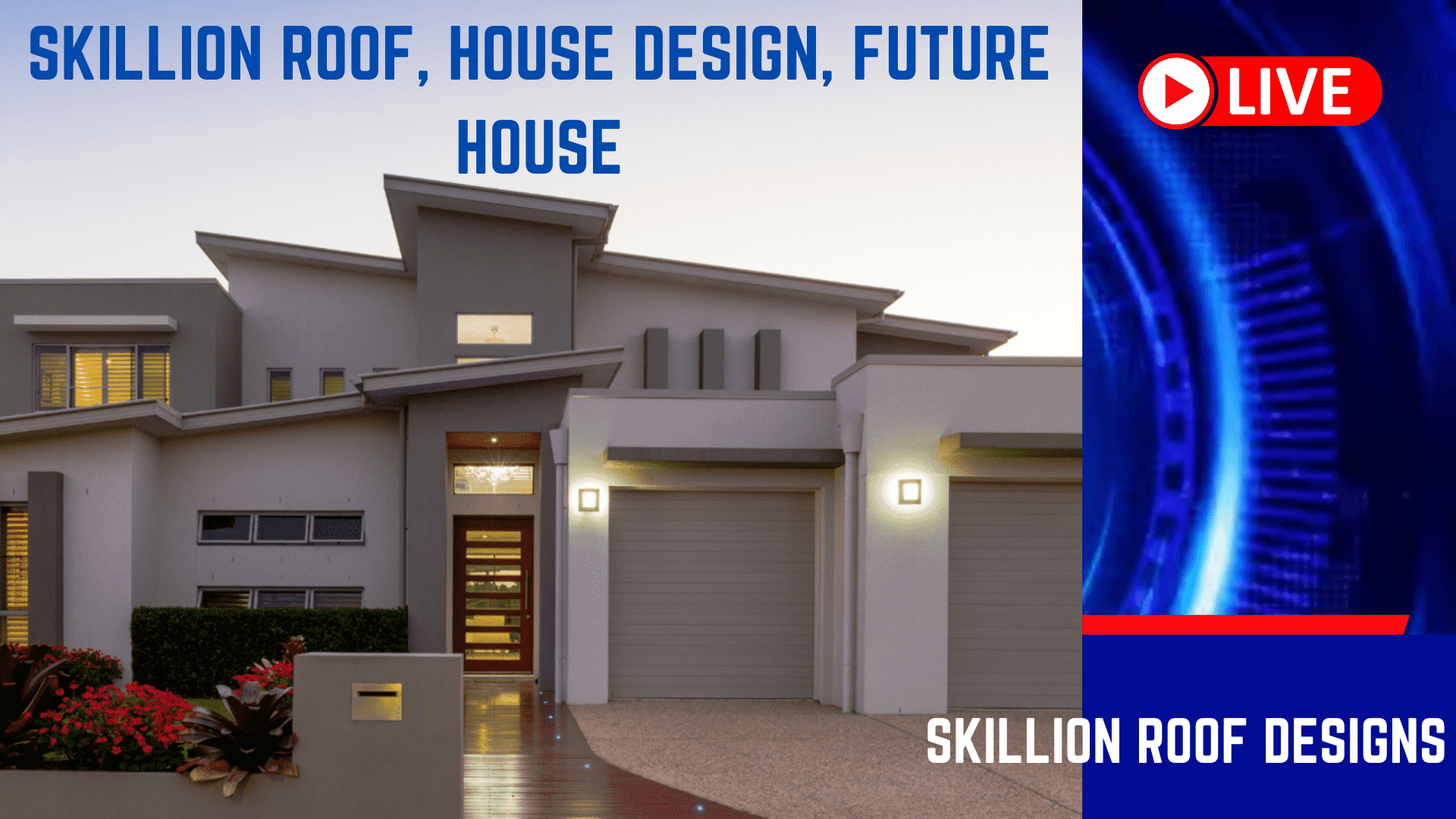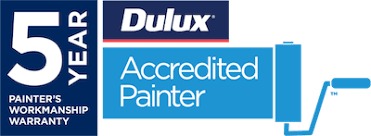With regards to planning your own home, there are many choices to make. The choice of roof to install is one of the most crucial aspects. Your roof not only plays a crucial structural role but also contributes to the aesthetics of your home. Be that as it may, with so many different rooftop plans to browse, it tends to be difficult to tell where to begin.
This article digs profoundly into skillion roof top plans, a flexible choice that can be utilized on a great many structures, including sheds, expansions, and dream homes. We’ll talk about what skillion roofs are, the four main styles of skillion roofs, the advantages and disadvantages of skillion roofing, and a few other frequently asked questions.
A skillion roof is what?
A skillion roof, also known as a “shed-style roof” in Australia, is a roof with a single large flat surface and a relatively steep pitch. Specifically, the roof is angled to have a high and low side. This makes it totally different from a customary gabled roof top which is made of two slanting sides that meet at a focal pinnacle. Likewise, the lofty point of a skillion roof top separates it from other level rooftops which are completely flat.
In Australia, skillion rooftops are usually connected with sheds and different storehouses, where they are many times utilized thanks to their generally quick and cheap development. Additionally, they frequently appear on older buildings’ extensions. However, homeowners who want to achieve a sleek, mid-century modern look are increasingly choosing skillion roofs.
The standard skillion roof can be designed in four different ways. In addition to the single-panel skillion roof, there are four other modern skillion roof designs:
Butterfly rooftop
Oval rooftop
Part skillion
Different skillion.
The key characteristics of each of these are described in greater detail below.
Butterfly Rooftop
A butterfly roof, or double skillion roof, features two sloping panels that converge at a central low point. This makes the rooftop seem to be a butterfly in flight — or something contrary to a customary gabled rooftop.
Very much like their level rooftop partners, butterfly rooftops acquired prevalence during the 20th 100 years and are frequently connected with the mid-century present day engineering of the US.
Butterfly roofs are a popular modern skillion roof design for a number of reasons, including their graceful appearance. First, their sloped surfaces, like the standard skillion roof, make it simple to install solar panels. Also, they consider profoundly effective water seepage, as they gather water in the valley between the two boards. As a result, they are an excellent choice for homes in drought-prone regions. Last but not least, the building’s angle gives it more room for tall windows at both ends.
Oval skillion roof
An oval skillion roof is similar to a standard skillion roof but uses a curved roof panel instead of a flat roof. Because of the intricacy of planning and building an oval skillion rooftop, they are more exorbitant than a standard skillion rooftop. As a result, residential buildings tend to have more oval skillion roofs than commercial or industrial ones. They do, however, have a few advantages over the typical skillion roof design. In particular, the bended shape makes them normally more wind safe than a standard skillion rooftop, while the bended shape lends a more natural style to the structure.
Split skillion roof
A split skillion roof has two skillion roof panels that are offset from one another to the point where one is higher than the other. A split skillion consists of two panels that are divided by a central wall, typically positioned in the middle of the building. Split skillion roofs combine the advantages of skillion roofs with the look of traditional gables because the panels typically slope in opposite directions. They can, however, incline in the same direction.
Multiple skillion roof
In a design known as a multiple skillion roof, a number of skillion roof sections are used across the building, typically in varying sizes and heights. To contrast with the main skillion roof, which slopes in the opposite direction, a smaller section of roof sloping to the right may be used over the entranceway.
The four best applications for skillion roofing
The versatility of skillion roofing is one of its greatest benefits and one of the reasons why it is becoming more and more popular. Skillion roofing is adaptable and simple to install on new homes, additions, verandas, and sheds.
Here are the absolute most normal purposes for skillion material:
on a brand-new house to achieve a minimalist look. The graceful silhouette of a butterfly roof, in particular, and the crisp lines of skillion roofs make them a popular choice among new builders. Skillion rooftops pair particularly well with current structure materials like glass, steel and cleaned concrete for a modern propelled plan.
On house augmentations. Skillion roofs go well with the designs of the roofs that are currently in use and are simple to construct, reducing the amount of work required to modify the roof structure. Their simplicity of development additionally assists with keeping expansions inside both your monetary and time spending plans. In addition, you can customize the skillion roof to fit the way you want the extension to blend in with the rest of the house. Skillion roofs are a great choice for creating a more seamless flow because the angle of the pitch can be easily adjusted to match the roof that is already in place. Then again, a skillion roof top developed from present day materials and set at an extraordinary pitch, can assist with underscoring the differentiation between the expansion and home.
for patios and verandas. Skillion roofs are a simple way to let in as much light as possible while also making sure that rainwater drains properly.
for carports and sheds. Skillion rooftops are one of the quickest rooftops to build, while being as sturdy and climate safe as other rooftop plans making them ideal for modern designs.
Skilon roofing has five main advantages:
Low cost, ease of installation, elegance, and efficiency are just a few of the advantages that have made it a popular choice for modern home builders. The five primary benefits of skillion roofs are discussed in greater detail below.
Skillion material is lower cost than different sorts of rooftop
Whether you’re constructing another house, or redesigning a more seasoned one, it’s simple for the expense to heighten. Being lower cost, skillion material is a great choice for property holders on a strict financial plan hoping to reduce expenses. Skillion material is lower cost than different sorts of material for two principal reasons:
It doesn’t need particular materials like other rooftop plans do. A skillion roof doesn’t need a waterproof membrane or rubber skin like a flat roof does because the roof’s pitch makes it easier for water to drain. Additionally, you can select a construction material that is within your budget, such as custom tiles or a corrugated roof.
Because the construction of skillion roofing is simple and, as a result, quick, labor costs associated with the project are reduced. Skillion roofs are easy to install because they are built using a standard method over rafters. Moreover, they needn’t bother with being set into the current rooftop whenever utilized for an augmentation, eliminating the need — and hence the expense — to improve the rooftop.
Skillion material is more straightforward to introduce than different kinds of rooftop
No extravagant materials. Construction is simple. What’s better than that? A skillion rooftop is developed utilizing a beam emotionally supportive network. The flat outer surface material will be seated on long rafters. Rafters are the part of the roof that will determine the roof’s angle and are used to give the roof support. Because they help to transfer the load from the roof to the outside walls, rafters are an essential component of the roof’s construction. The rafters and supporting wall are typically joined with a straightforward “bird’s mouth cut.” Since skillion material is developed over rafters utilizing this essential strategy to accomplish the ideal point, it’s one of the quickest rooftop plans to introduce. The builder can also construct skillion roofs on-site, reducing transportation costs.
Skillion roof designs are also simple. Since the rooftop involves just a solitary level surface, and it can be independent from different segments of the rooftop, there are less points to ponder while planning and introducing the rooftop. This makes skillion roofs a great option for home builders because they only require a few simple materials.
Skillion roofing delivers a classy
The timeless, elegant design aesthetic that skillion roofs can help to create inside and outside your home is arguably the primary reason why it is so popular among homeowners in the 21st century. While skillion rooftops have been around for quite a long time, the plan acquired fame in the post-war long stretches of the twentieth 100 years, when mid-century current plan thoughts regarding clean lines, moderation and straightforwardness rose to the front.
Today, skillion roofs can be combined with a wide range of other building materials and designs to give your home’s exterior a unique appearance. Skillion roofs, when paired with metal and glass, contribute to the minimalist industrial look. On the other hand, utilized close by traditional rural structure materials they mix in consistently with existing plans.
Skillion roof styles also have an effect on how your home looks inside and can help you create a unique interior. Because your house is on a slope, for instance, your interior design can take advantage of high ceilings in certain areas. Likewise, numerous property holders looking for a rural plan select to allow the skillion roof top supporting rafters to stay uncovered for an extraordinary look. Additionally, skillion roofs are ideal for skylights, which contribute to the space’s warmth and light.
Skillion roofing offers excellent water drainage
One of the most significant advantages of skillion roofing is how effectively and efficiently it sheds water. Water will naturally accumulate on the roof’s lower side due to its slope. Skillion roofs have this distinct advantage over flat roofs, which are susceptible to water pooling and necessitate specific water-proofing treatments to prevent leakage into the ceiling. Skillion roofs are a good choice if you live in a region that gets a lot of rain or a region that is prone to drought and you want to collect more rain for your home. This is because skillion roofs can easily remove water.
Your skillion roof’s design may necessitate a larger box gutter that is made to collect water between two sections of roof, depending on how it is constructed. For instance, on the off chance that you introduced a butterfly rooftop, where both rooftop boards slant down to a main issue, making water run off into the center of the room, you might require a crate drain to gather and deplete the water.
Skillion roofing enables optimal space utilization for solar panels.
With electricity costs continuing to rise, it is becoming increasingly important to design homes that are as eco-friendly as possible. Skillion roofing helps to maximize space for solar panels. Skilled roofs have a number of other advantages, but one of their environmental advantages is that they provide ample space for solar panels. Contrary to popular belief, solar panels perform best when set at an angle, which is why they are used in solar farms in such specific configurations. A flat roof is not the best orientation for solar panels. A skillion rooftop is subsequently a greatly improved option in contrast to a level rooftop since, similar to a gabled rooftop, it places sunlight powered chargers at a proper point. Very much like some other rooftop, the direction of the skillion roof top will be the main variable to remember whether you are thinking about introducing sunlight powered chargers: In general, solar panels work best on roofs that face north.
Disadvantages of skillion roof designs
In addition to the aforementioned benefits, skillion roof designs have a few drawbacks that should be taken into consideration when selecting a roof for your house or addition. The following provides additional information regarding the two primary drawbacks of skillion roof designs.
Skillion roofing does not provide any room for an attic space
The most significant drawback of a skillion roof design is that it does not permit attic space. The attic is the space above the ceiling that is located between the two sloping sides of a typical gabled roof design—i.e. the portion within the triangle. However, skillion roofs do not naturally create an attic space because they only have one flat surface and are typically set at a lower angle than gabled roofs. Because of this, they are not as suitable for homes that require additional storage space in the loft.
Skillion roof designs are more prone to wind damage than gabled roof designs
Compared to gabled roof designs, skillion roof designs are more susceptible to wind damage. Designing and building a house or extension requires a significant investment. As a result, builders and homebuyers alike frequently prioritize durability. Notwithstanding precipitation, wind is one of the key components your rooftop will be presented to over its lifetime, making it especially vital that you pick the right rooftop for wind assuming you live in a space presented to high breezes.
Sadly, one of the main disadvantages of a skillion roof is that it is not the best option in areas with high winds. This is on the grounds that rooftops with numerous inclines improve in the area of scattering high breezes. Consequently, skillion roofs are less weather-resistant than traditional gable roofs, despite being more durable than flat roofs.
Five Examples of skillion rooftops
The following are five instances of skillion rooftops that exhibit probably the most widely recognized skillion roof top plans. We highlight the distinctive characteristics and advantages of each design for each illustration.
In the preceding illustration, multiple skillion roofs can be utilized throughout a building for straightforward construction in a contemporary urban setting. The illustration demonstrates the various angles that can be used to position each skillion roof section. Additionally, it demonstrates one of the most significant benefits of a skillion roof, which is the roof’s ability to be set against another section of the house. They are an excellent choice for quick and inexpensive extensions due to this feature and the relatively low cost of the building materials used. Last but not least, the image demonstrates how the skillion roof’s angle and location at a slight overhang from the building can effectively shade the structure. A standard flat roof would not be able to accomplish this easily.
To make the most of the space inside the house shown above, a modern skillion roof with a very steep pitch is used. The skillion roof design allows for extra-high ceilings that help to create a feeling of spaciousness in a space that is otherwise only modestly sized by setting the roof at this pitch. In addition, this illustration demonstrates how adding additional windows can make the most of the large wall needed to reach the skillion roof’s peak. The addition of grey trim to the roof not only helps to emphasize the sleek lines of the roof but also helps to connect it to the window frames the materials mentioned above are utilized throughout the remainder of the structure.
In the model over, a few skillion rooftops are utilized across numerous segments of the structure. This house is a good illustration of how skillion roofs can be used to cover different parts of the same building to keep the same look. It shows that skillion roofs are easy to build because they can stand on their own and be easily positioned against the walls of features that are already there. For instance, you can see that there were no difficult building modifications required because the roof over the entranceway was installed flush with the shed and front room walls.
This model additionally shows how guttering functions with skillion rooftops. Since the center two rooftop segments incline downwards towards the front of the house, the drain is joined on that edge, and associated with a downpipe to effortlessly move water away from the rooftop. By correlation, there is no downpipe appended to the high mass of the front right part of the house in light of the fact that the skillion roof top sheds water the other way.
The skillion rooftop in the house above is an illustration of a moderate plan at its ideal. This contemporary skillion roof has been carefully designed to give the impression of sitting gently on top of the rest of the structure, as you can see through the top window. This illustration demonstrates how a modern design can be achieved by combining skillion roofs with industrial building materials like exposed brick and steel. The skillion roof protrudes slightly from the building, serving the purpose of providing shade, while the additional wall height accommodates windows that maximize the intake of natural light. The high place of the skillion roof top has likewise been calculated towards a pleasant part of the property to expand the view.
The main part of the building in the example above has a skillion roof, while the garage and front of the house have flat roofs. In this plan, the skillion rooftop is set at a moderately high point, to consider an extra level in the entranceway. This additional wall space has been keenly changed over into a window to expand how much normal light in the home. This illustration exemplifies a number of important aspects of skillion roof designs. It grandstands the extra wall level, first and foremost, expected to fit in a skillion roof top set at a lofty pitch. Second, this illustration demonstrates how easily the skillion roof can be customized to fit other important design features. For this situation, dim trim is utilized on the rooftop to get the dim of the brickwork. Last but not least, this illustration exemplifies the skillion roof’s ideal thickness for skylight installation.










